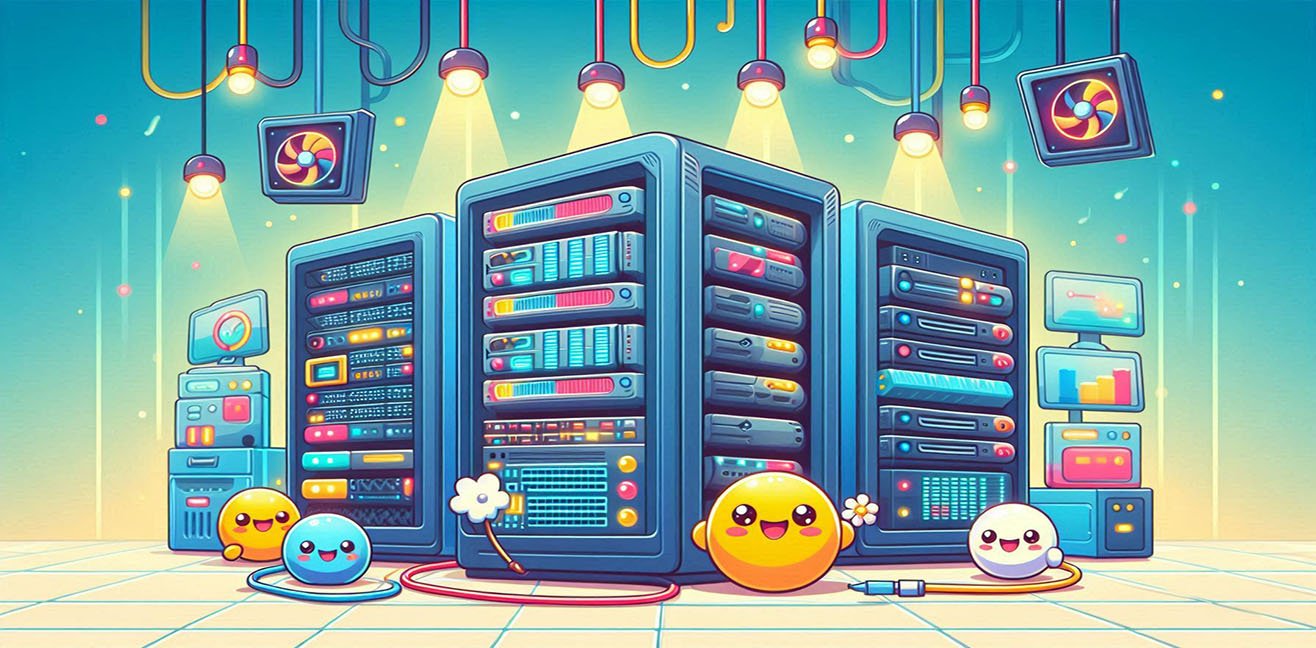Hello, dear tech enthusiast! 😏 Today, we’re diving into the inner world of servers: Rack-Mount, Tower, and Blade servers. We’ll explore not only their shapes but also their internal structures, advantages, use cases, and technical details. Get ready, because this article will be both educational, technical, and fun! 🎢💻
1️⃣ Tower Servers – Desktop-Sized Power Beasts 🏠💪
Tower servers may look like large desktop computers, but inside, they are performance monsters. Perfect for small businesses, labs, and data processing needs.
Technical Features and Internal Structure:
- Chassis Type: Vertical, standalone, and spacious. Provides room for large power supplies and advanced cooling solutions.
- CPU: Typically 1-2 sockets, Intel Xeon or AMD EPYC series. Multi-core and high-frequency options available.
- RAM: ECC (Error-Correcting Code) supported, from 64 GB up to 512 GB. Flexible RAM slots.
- Storage: SATA, SAS, or NVMe drives; RAID configurations for data security.
- Expansion: PCIe slots for additional network cards, GPUs, or accelerators.
- Cooling: Large fans, sometimes liquid cooling, quiet yet powerful performance.
Advantages:
- Easy to set up, standalone operation.
- Expandable RAM and storage for flexibility.
Disadvantages:
- Bulky, takes up space.
- High energy consumption, may hurt your electricity bill 😅💸
Tower servers are like big, strong uncles saying, “I’m here, powerful, and I need space!” 😎
2️⃣ Rack-Mount Servers – The Organized Heroes of Data Centers 🗄️✨
Rack-mount servers are the aesthetic and organized champions of data centers. They fit into standard 19-inch racks and provide high density.
Technical Features and Internal Structure:
- Chassis Type: Comes in heights like 1U, 2U, 4U. 1U = 1.75 inches. Smaller height allows more servers per rack.
- CPU: 1-2 high-performance Xeon/EPYC sockets, sometimes dual-socket for multi-core power.
- RAM: ECC RAM ranging from 128 GB to 2 TB.
- Storage: Hot-swap SAS/SATA/NVMe drives. RAID 0,1,5,10, and 50 common.
- Expansion: RAID cards, high-speed NICs, GPU support.
- Cooling: Airflow optimized front-to-back fans for temperature control.
Advantages:
- Saves space, high density.
- Easy cabling and centralized management.
- Backup and UPS integration is easy.
Disadvantages:
- Requires some technical knowledge to install.
- Expensive and complex for individual use.
Rack-mount servers are the feng shui champions of offices. Everything in its place, every server in its corner! 🌟
3️⃣ Blade Servers – Minimalist, Dense, and Energy-Efficient 😎⚡
Blade servers are the stars of data centers, providing maximum performance in minimal form. Multiple blades fit into a single chassis, saving energy and space.
Technical Features and Internal Structure:
- Chassis Type: Slim modular blades housed inside a chassis.
- CPU: Usually dual-socket Xeon/EPYC; some models support 4 sockets. High core counts for heavy workloads.
- RAM: 128 GB to 2 TB ECC RAM per blade. Centralized management within chassis optimizes RAM usage.
- Storage: Typically uses network storage (SAN/NAS); some have local NVMe drives.
- Expansion: PCIe expansion, GPUs, FPGAs, and accelerators.
- Cooling: Chassis fan modules and optimized airflow. Energy-efficient cooling system.
Advantages:
- High density + small footprint.
- Energy-efficient and centralized management.
- Ideal for large data centers and cloud services.
Disadvantages:
- Expensive.
- Installation and management require expertise.
Blade servers embody the philosophy: “minimalist but powerful.” Small body, huge energy, my love! ⚡💖
🔍 Comparison of Server Types
| Server Type | Physical Form | Density | Energy Efficiency | Use Case | Installation Difficulty |
|---|---|---|---|---|---|
| Tower | Standalone, vertical | Low | Medium | Small office, lab | Easy |
| Rack-Mount | 19” rack, 1-4U | Medium-High | Medium | Medium & large offices, data center | Medium |
| Blade | Modular chassis | Very high | High | Large data centers, cloud | Hard |
💡 Summary:
- Tower = Power and flexibility, no space issues.
- Rack-Mount = Organization and density, medium energy efficiency.
- Blade = Minimalist, dense, and energy-efficient, but requires expertise.
Server world, my love, isn’t just boxes; each has its own character and internal structure that keeps data centers alive! 💻❤️




